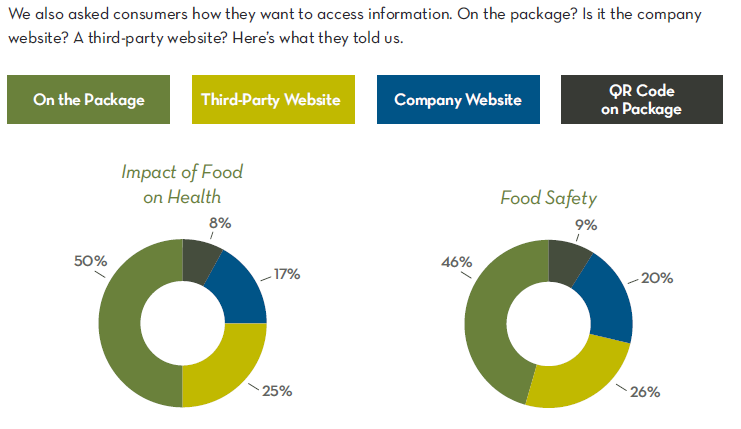Safer food through informing consumers

The third pillar of leadership: informing consumers
Sharing ingredient and contaminant information with consumers is key to business leadership on food. It can build consumer confidence, trust, loyalty – and market advantage. It shows that a company embraces and executes on the philosophy that consumers have the right to know what is in the products they buy. Additionally, consumer transparency fosters accountability within the company to make informed decisions about the ingredients and products they buy, sell and design to meet customer demands for increased product safety and sustainability. It also provides a means for public recognition of corporate leadership regarding safer food.
The key to success in cultivating an informed consumer is providing product information that is comprehensive, accessible, and, importantly, meaningful. Consumers want to:
- Have easy access to consistent, reliable information.
- Feel empowered when making purchasing decisions for themselves and their families.
- Understand what they’re bringing into their homes.
- Avoid adverse health and environmental impacts.
- Trust that brands and retailers respect their interest in knowing product composition.
Engaging consumers
How does a company cultivate an informed consumer? For starters, by sharing ingredient and contaminant information on product packaging and/or online for products it makes or sells, with content that extends well beyond regulatory requirements. While packaging physically limits the amount of information that can be shared with consumers, online disclosure allows greater flexibility in terms of the extent and type of ingredient information, as well as how that information is accessed and presented.


Addressing three key questions fosters informed consumers:
What chemicals are in the product?
This means providing the specific identity of intentionally added ingredients as well as known contaminants. If a product contains a ‘free-of’ claim, there should be verification that the product complies with the regulatory agency’s labeling rules and the Federal Trade Commission’s Green Guides to prevent green-washing. Further, free-of claims should be substantiated by a third party.
Why these chemicals are in the product?
This requires clear and understandable information about what function each ingredient serves.
How to make meaning out of the information?
While the what and the why form the core of the information a company shares with their customers, how this is presented is critically important as that defines accessibility. Product ingredient and known contaminant information needs to be easy to find on a manufacturer’s or retailer’s website, not buried. It is most helpful if information is also presented in a consistent manner across products and product lines.
Overcoming hurdles on the path to leadership
Available information
Companies themselves can have trouble finding the ingredient and contaminant information that’s important to share with consumers. For example, manufacturers may not know the individual ingredients of a flavor blend or the food contact substances used in their products, yet this information can be critically important for consumers with allergies, pregnant women or young children. Supply chain transparency – another core pillar of safer food leadership – can enable effective systems for increasing information flows and expanding product ingredient information.
Managing an online platform
Online disclosure involves the transfer of internal data to a public-facing platform. To do this, a company may face software infrastructure challenges. Managing this effectively will require time, personnel, and financial resources. The site will need regular maintenance to ensure product information is always up-to-date, particularly if a formulation changes, and to accommodate increased data as the company gains more transparency into product ingredients and contaminants.

Resources for informing consumers of food ingredients and packaging
Chemical Cuisine by the Center for Science in the Public Interest
Food Scores by Environmental Working Group
Smart Label by the Grocery Manufacturers Association
Flavor Ingredient Library by Flavor and Extract Manufacturers Association